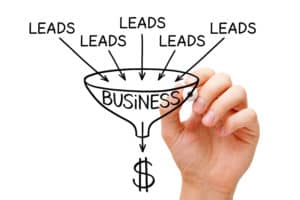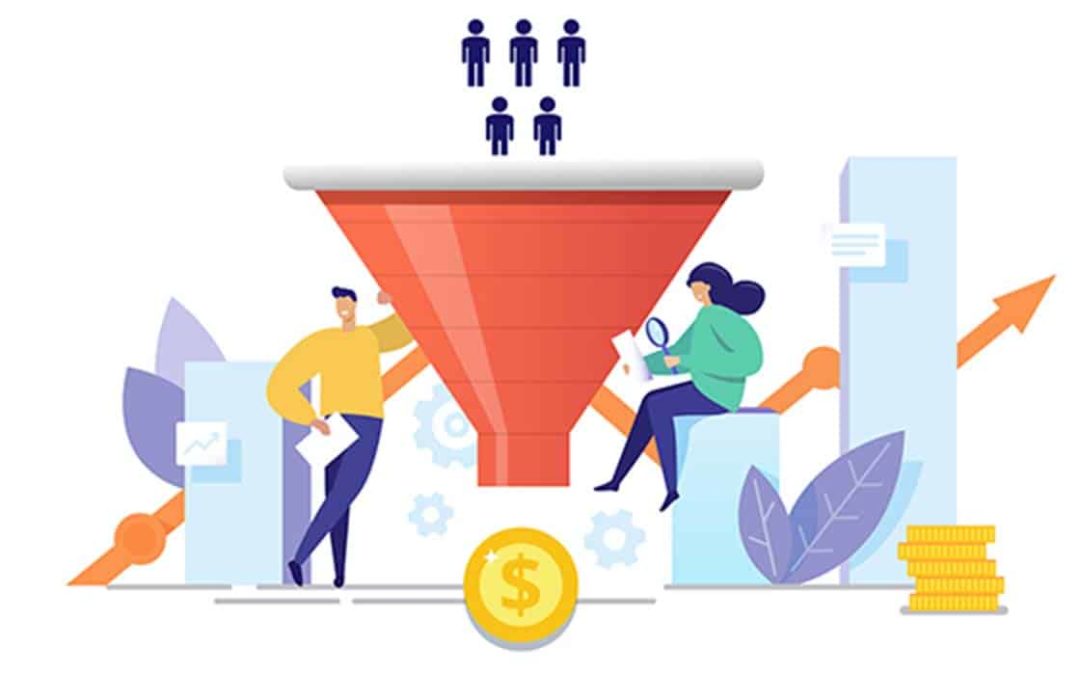According to a 2013 Salesforce white paper, a mind-blowing 79% of marketing leads are never converted to clients. That means on average, small businesses are only making 21% of the sales they could be. If your average client is worth $500, then for every 100 leads, you’re leaving $39,500 on the table. Are you cringing yet? Then consider a sales funnel!

If you’ve noticed leads falling through the cracks (or just want to boost your conversion rate), a sales funnel is a classic marketing tool that thousands of companies, including Newsletter Pro, use to great effect. If you’ve never heard of it, the name says it all. Leads enter in at the “top” of the funnel and are gradually guided down to the bottom. That’s where they enter your company as clients.
Building a sales funnel can seem intimidating if you’ve never tried it. So, to help you get started, we put together a simple 5-step guide!
Step 1: Identify The Perfect Client For Your Funnel

In order to build your sales funnel, you need to know who to “suck in” to the top of the funnel. These people will start as leads but eventually convert to clients, so think carefully about the demographic you’re targeting. Who is your product or service designed for? What is that person’s age, gender, occupation, and income? What are their hobbies, dreams, and problems? Where do they hang out, and how do they spend their free time? Using the answers to these questions, build a customer avatar (or several) that will shape your decisions in Step 2.
Step 2: Advertise (The Smart Way)

Now that you’ve identified your ideal leads, it’s time to pull them into your funnel. To do this, design a multipronged marketing campaign tailored to the avatars you built in Step 1. Consider direct mail postcards, Google AdWords, co-branding, SEO, paid social and print media posts, online ads, and influencer campaigns. The strategies you choose will depend on your target demographic and your business model (are you B2B or B2C?). If you’re targeting seniors, for example, a direct mail campaign might be more effective than social media advertising. However, the reverse may be true for a younger audience.
Step 3: Generate Excitement

This step of funnel-building is often called “desire.” It’s where you convince people who have found your social media page or website to dive deeper or express interest. The key to success here is quality, consistent branding. Make sure your company’s mission and products are clearly stated. Also, use tactics like engaging content, reviews and testimonials, eye-catching visuals, and strong calls to action. These will keep readers on your website longer.
Videos and humor are great tools to help build your brand. Lead magnets, like free downloads or email newsletters, will capture visitor information and officially convert them into leads. They are now entering the funnel. As you’re considering all of these things, keep usability in mind! Your site also needs to be mobile-friendly, functional, and easy to navigate.
Step 4: Stay In Touch

Congratulations! You’ve successfully generated leads. Now, it’s time to nurture them. This is where a lot of companies drop the ball. According to Forbes’ in-house research, only 27% of leads are ever contacted by the company they show interest in. That is a huge untapped resource! To correct it, put automated strategies in place to nurture your leads and keep your company top of mind. Print newsletters are a great way to stay in touch, build your brand, and create a lasting relationship.
Your newsletter content can answer questions and assuage fears. It also keeps readers up to date on products, services, and offers they might be interested in. Email newsletters are another good strategy, but don’t stop there. Many underestimate the power of a good old-fashioned follow-up email, text, or call. Keep them in the funnel! (Our team members at Newsletter Pro truly are “pros” in this area, so if you want to enhance your nurturing campaign, give us a call!).
Step 5: Convince And Convert

Now, make it easy for your warm leads to convert to clients. Offer a clear path to booking a consultation or purchasing a product, including a Q&A page and simple-to-use payment options. In order to help them follow through, minimize the fine print. Don’t make a bunch of boxes they have to check and steps to take to see basics like shipping costs. Also, if you offer a lot of products or services, consider reducing the number. A study conducted by Columbia University found that customers with fewer choices (in the case of the study, 6 jams versus 24) are 10 times more likely to make a purchase.
Stop leaving money on the table! These 5 steps will ensure you create an effective sales funnel and turn those leads into active clients!


Recent Comments